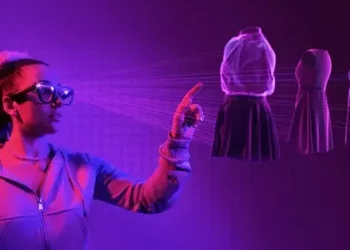In recent years, the term “metaverse” has gained significant traction, fueled by technological advancements and a growing interest in virtual worlds. As discussions surrounding the metaverse become more prevalent, one key question arises: Is the metaverse truly open?
Defining the Metaverse: A Multifaceted Virtual Realm
Before delving into the openness of the metaverse, it’s crucial to understand what the term encompasses. The metaverse refers to a collective virtual shared space, merging the physical and digital realms. It is a space where users can interact with computer-generated environments and other users in real-time, often facilitated by augmented reality (AR) and virtual reality (VR) technologies.
The Vision of an Open Metaverse: Idealistic Aspirations
At its core, the concept of the metaverse is rooted in the idea of an open and interconnected virtual world. Advocates envision a space where users can seamlessly move between different platforms, applications, and virtual environments, fostering collaboration and creativity on a global scale. The aspiration is to create a metaverse that is not controlled by a single entity but rather emerges as a decentralized and inclusive space.
Current State of the Metaverse: Walled Gardens and Silos
Despite the utopian vision of an open metaverse, the current reality paints a more complex picture. Many existing virtual worlds and platforms operate as walled gardens, limiting interoperability and restricting user movement. Major tech companies and platforms have developed their own closed ecosystems, creating silos that hinder the seamless flow of users and content between different metaverse entities.
Closed Ecosystems: A Barrier to Openness
Tech giants such as Facebook (now Meta), Google, and Microsoft are actively investing in the development of their metaverse initiatives. While these efforts bring innovation and resources to the table, they also raise concerns about monopolistic control. Each platform is building its own metaverse, complete with its rules, currencies, and user policies. This fragmentation poses a significant challenge to the vision of an open metaverse.
Interoperability Challenges: Bridging the Gaps
One of the primary obstacles to an open metaverse is the lack of interoperability between different virtual worlds and platforms. Currently, users often find themselves confined to a specific metaverse, unable to seamlessly transfer their assets, avatars, or experiences to another environment. Efforts to establish common standards and protocols for interoperability are underway, but progress is slow, and competing interests sometimes impede collaboration.
Emerging Solutions: Standards and Protocols
To address the issue of interoperability, industry stakeholders are actively working on the development of standards and protocols. Initiatives like the Open Metaverse Interoperability Standard (OMIS) aim to create a framework that enables the seamless exchange of assets, identity, and experiences across different metaverse platforms. While these efforts represent a step in the right direction, widespread adoption and implementation are necessary for a truly open metaverse to materialize.
Blockchain Technology: A Catalyst for Openness
Blockchain technology has emerged as a potential game-changer in the quest for an open metaverse. Decentralized ledger systems offer solutions to issues of ownership, security, and interoperability. Non-fungible tokens (NFTs) on blockchain, for example, allow users to truly own and transfer digital assets across various metaverse platforms, reducing dependence on closed ecosystems.
The Role of Regulation: Balancing Innovation and Control
As the metaverse continues to evolve, the role of regulation becomes increasingly relevant. Governments and regulatory bodies face the challenge of striking a balance between fostering innovation and preventing monopolistic practices. Establishing guidelines that promote interoperability, data privacy, and user rights will be crucial in shaping an open and inclusive metaverse.
The Path Forward: Collaboration and Community Involvement
Creating an open metaverse requires collective effort from industry players, developers, and users alike. Collaboration is key to overcoming the current challenges and realizing the vision of a truly open and interconnected virtual realm. Engaging in open dialogues, supporting interoperability initiatives, and advocating for user-centric principles can contribute to shaping a metaverse that aligns with the ideals of openness and inclusivity.
See Also: [Revealed!] How to Use the Metaverse on Oculus Quest 2?
Conclusion: Navigating the Landscape of the Metaverse
In conclusion, the metaverse is at a crossroads between the idealistic vision of openness and the current reality of closed ecosystems and interoperability challenges. While strides are being made towards standardization and blockchain integration, the journey to a fully open metaverse requires ongoing efforts from the entire community. As technology advances and societal expectations evolve, the path forward will likely involve a delicate balance between innovation, regulation, and collaborative engagement. The future of the metaverse hinges on our collective ability to navigate these complexities and build a virtual world that truly lives up to the promise of openness.
Related topics:

















